Cicadas: Time Traveling Trouble Makers
The District is once again abuzz with the news of the upcoming cicada swarm that is set to descend upon the region in the coming weeks. The swarm, called Brood X, will arise from their shallow, underground dwellings by the billions after 17 years of hibernating. These tiny visitors will partake in a weeks-long summer festival of breeding, drowning out the usual babbling of lawmakers with a constant din of mating calls. These cicadas will die off, leaving behind their offspring to continue the survival-oriented legacy of their ancestral pests: burrow, sleep, awaken, breed, die.
Although a scourge of locusts may seem especially fitting after a year of global disease and political unrest, just another sign of the end times, these cicadas are simply taking their place in a long lineage of teeny time travelers.
Dating back decades, the cicada news stories are virtually the same each cycle. Entomologists assure the public that the bugs are harmless; many people are perturbed by the pests; and some inexplicably always ponder what’s the best way to eat them.
Our reaction to the visitors may not change each cycle, but the world around us does. When these bugs were last awake and above ground in 2004, flip phones were cutting edge technology, Shrek 2 was in theaters, and gas was less than $2 per gallon.
Now, upon waking up, the cicadas will witness major technological advancements; their arrival will coincide with the first Democratic president since they appeared during the FDR administration; they’ll be able to attend a Major League Baseball game in the District for the first time since 1970; and, oh yeah, all of the humans will be wearing face masks.
As novel as the cicada experience may seem to us humans, the most interesting aspect of their visit is the story it tells about the passage of time: how much changes in 17 years and how much doesn’t change at all. To honor our temporal visitors, here is a look back at how the District and the world have changed over the past several generations of cicadas.
1902: A Dreadful Pest
Brood X arrived in the 20th Century right on schedule in 1902. The public sentiment toward the creatures in this period is remarkably similar to that of a century later. “The popular judgement is that the seventeen-year locust is a dreadful pest and ought to be destroyed,” the Washington Evening Star reported.[1]
Entomologists had to assure the public that the cicadas are in fact harmless, as they still do today; although, back then, they dealt with much more absurd and unsubstantiated superstitions. The Evening Star wrote, “Stories are told everywhere of broods which ate the lumber on houses and barns ‘until they looked like boards fresh from the mill,’ of crops devastated in a few hours, and of numerous children who died instantly from the poison of ‘locust stings.’"[1] Needless to say, the cicadas are not locusts, and they pose no threat to your children or your barns.
Overall, the cicadas were an afterthought on the pages of District newspapers, because as the cicadas emerged from underground, so too did the nation’s coal miners, refusing to return to their work. The headlines of the day were primarily dominated by the coal miners’ strike[2], a “turning point” in American labor policy.[3] The miners held out on returning underground much longer than the cicadas, with the strike only ending in October of that year.
1919: Relentless Warfare
In 1919, the cicadas awoke to find a world that was still reeling from the Great War, which had ended just six months prior. Negotiations over war settlements and peace deals were wrapping up in Europe, and the Treaty of Versailles was submitted to the U.S. Senate during the cicadas’ short visit.
Just as world leaders were urging peace in Europe, scientists were calling for peace against the cicadas, once again reminding the public that they are harmless. The Evening Star wrote, “Anyhow, the fact that the insects do no harm except to young trees, the scientists assert, removes them from the list of dangerous pests against which relentless warfare must be waged."[4]
An Evening Star columnist, who wrote under the pseudonym “The Rambler,” reminded readers that there are things in the world which are much worse than the noise of the cicadas: chief among them, opinionated men. “As to the cicadas, their noise is heard only at intervals of seventeen years, while there are men, apparently just as numerous as cicadas, who insist on giving you their opinions every day in the year,” the Rambler wrote in such elegant and timeless prose it begged to be included in this series.[5]
Although the cicadas awaking in 2021 may find it odd that the humans are wearing masks, it actually isn't the first time the bugs have witnessed something like this. In 1919, the District was starting to emerge from the Spanish Flu pandemic, just as the cicadas were emerging from the ground in May. The deadly virus had reached its peak in the District in the Fall of the previous year, killing up to 70 people per day in DC. Public health measures were put in place, including a ban on mass gatherings and the closing of schools and churches. By the following Spring, District residents were eager to return to normal life.
1936: A Timeless and Apparently Tasty Tradition Begins
By 1936, the cicadas had unfortunately missed out on the Roaring Twenties. They awoke in the Great Depression as President Roosevelt was implementing his New Deal. Alongside these New Deal headlines, a story of a group of University of Maryland students who decided to eat the cicadas ran on the front page of the Evening Star. The bugs tasted “something like soft shell crabs” when sauteed in butter, the students claimed.[6] Every cicada cycle thereafter, newspapers have carried stories of curious taste testers who give their thoughts on the protein-rich insects.
1953: Long Live the Cicadas
Awaking in 1953, the cicadas must have been shocked by the developments of the world while they were away. The “Great War” that they had missed previously was now just part one of a two part series of World Wars. The world was now in the nuclear age, with apocalyptic weapons pointed at each other. The United States was now the global superpower, locked in a “cold war” with the communist USSR. They arrived at the very end of the Korean War and at the very beginning of the reign of Queen Elizabeth II. After becoming Queen upon her father’s death the year prior, Queen Elizabeth was finally able to celebrate her new title at her coronation in early June 1953.[7] The modern Brood X will be the fifth generation of cicadas that have come and gone while she wears the crown.
1970: No Beatles for the Cicadas
When Brood X awoke in 1970, they again had missed quite a bit, including a presidential assassination and humans landing on the moon. Tragically, they also just missed out on ever seeing the Beatles still together, after Paul McCartney announced the band’s breakup in April 1970.
Aside from the devastating Beatles news, the cicadas came during a tumultuous month of the Vietnam War. Following President Nixon’s April 30th announcement that the war was officially expanding into Cambodia, protests broke out in cities and on college campuses, including famously at Kent State where four students were killed and less famously at University of Maryland, College Park. Several days later, thousands descended upon the National Mall to protest the war.
By the time the cicadas arrived later in the month, the protests had died down, but on the same day the Washington Post announced that the “17-Year Locusts Emerge From Their Burrows,” there was another grim headline tucked away on page 10: “Total American Deaths Reach 50,000 in War."[8]
1987: Bring Them to Justice
By 1987, the cicadas had skipped over Watergate and the first ever presidential resignation, but they awoke to another grand political scandal. The news of the impending cicadas made the A1 Sunday headline in the Washington Post on May 3, sharing the front page with the headline, “On Tuesday, Congress Raises Curtain on Iran-Contra Affair.” For several months prior, Congress had been investigating Reagan administration’s cover up of the secret arms deal with Iran, and now, just as the cicadas were emerging, the eyes of the nation and the media were trained on “the most significant three month hearings since Watergate."[9]
Meanwhile, the cicadas were earning their title of pests. Several cicadas flew into an Arlington driver’s open car window, causing him to crash into a telephone pole. “He wasn’t charged, but we’re trying to find the locusts in the case and bring them to justice. We don’t even have a good description of them,” a police spokesman told the Post.[10]
2004: Twice A Trend
When the cicadas awoke for the first time in the 21st Century, they may have been startled by one of the biggest seventeen-year shifts in American history they had witnessed to date. The Soviet Union had fallen, the Cold War had ended, and the US was embroiled in two new wars in the Middle East. Global attention had shifted once again from one -ism to another. Now, instead of defeating communism, as the US had been preoccupied with for three of the cicadas’ life cycles, the US was focused on defending against terrorism, and the headlines of the day reflected this.
On May 11, 2004, the news of the cicadas emerging was again given an A1 headline in the Sunday Washington Post, sharing the front page with a profile on US torture methods, titled “Secret World of U.S. Interrogation: Long History of Tactics in Overseas Prisons is Coming to Light.”[11] The details of the Abu Ghraib torture tactics had been revealed the previous month, and the military was contending with the blowback for weeks afterwards.
The cicadas were less focused on geopolitics; they were too busy getting into trouble of their own…again. In a strikingly similar incident to 1987, a cicada flew into the face of a woman while she was driving in Bethesda with her windows down. The driver crashed into a fire hydrant, releasing a deluge of water onto the street. “The fate of the cicada is unknown,” the Post reported. “‘If nothing else, it probably drowned,’ [a fire department spokesman] said.”[12] Perhaps, if you’re going to be driving in the region when the new cicadas arrive, consider driving with your windows rolled up. Once is a fluke, but twice is a trend.
Footnotes
- a, b Evening star. [volume] (Washington, D.C.), 30 May 1902. Chronicling America: Historic American Newspapers. Lib. of Congress. <https://chroniclingamerica.loc.gov/lccn/sn83045462/1902-05-30/ed-1/seq-10/>
- ^ The Washington times. (Washington [D.C.]), 28 May 1902. Chronicling America: Historic American Newspapers. Lib. of Congress. <https://chroniclingamerica.loc.gov/lccn/sn87062245/1902-05-28/ed-1/seq-…;
- ^ https://www.dol.gov/general/aboutdol/history/coalstrike
- ^ Evening star. [volume] (Washington, D.C.), 31 May 1919. Chronicling America: Historic American Newspapers. Lib. of Congress. <https://chroniclingamerica.loc.gov/lccn/sn83045462/1919-05-31/ed-1/seq-…;
- ^ Evening star. [volume] (Washington, D.C.), 29 June 1919. Chronicling America: Historic American Newspapers. Lib. of Congress. <https://chroniclingamerica.loc.gov/lccn/sn83045462/1919-06-29/ed-1/seq-…;
- ^ Evening star. [volume] (Washington, D.C.), 30 May 1936. Chronicling America: Historic American Newspapers. Lib. of Congress. <https://chroniclingamerica.loc.gov/lccn/sn83045462/1936-05-30/ed-1/seq-…;
- ^ Evening star. [volume] (Washington, D.C.), 30 May 1953. Chronicling America: Historic American Newspapers. Lib. of Congress. <https://chroniclingamerica.loc.gov/lccn/sn83045462/1953-05-30/ed-1/seq-…;
- ^ Stevenson, Tom. "17-Year Locusts Emerge from their Burrows: A 17-Year Infestation Returns." The Washington Post, Times Herald (1959-1973), May 23, 1970. https://search-proquest-com.dclibrary.idm.oclc.org/historical-newspaper….
- ^ Rensberger, Boyce. 1987. "Cicadas' Life Cycle Nears Roaring Finale: Insects Ending 17-Year Burial Cicadas Set to End 17 Years Underground." The Washington Post (1974-Current File), May 03, 2. https://search-proquest-com.dclibrary.idm.oclc.org/historical-newspaper….
- ^ Davis, Patricia. 1987. "Who Says Cicadas are Harmless?: Not the Arlington Driver Forced Off Road by Buzzing Bugs." The Washington Post (1974-Current File), May 28, 75. https://search-proquest-com.dclibrary.idm.oclc.org/historical-newspaper….
- ^ BARR, CAMERON W. 2004. "Vanguard of Brood X Marks its Spot: All Over: Cicadas Come of Age, Right on Schedule." The Washington Post (1974-Current File), May 11, 2. https://search-proquest-com.dclibrary.idm.oclc.org/historical-newspaper….
- ^ BARR, CAMERON W. 2004. "Cicadas are Harmless? Mayhem Says Otherwise: Set-upon Driver Mows Over Hydrant." The Washington Post (1974-Current File), May 25, 1. https://search-proquest-com.dclibrary.idm.oclc.org/historical-newspaper….


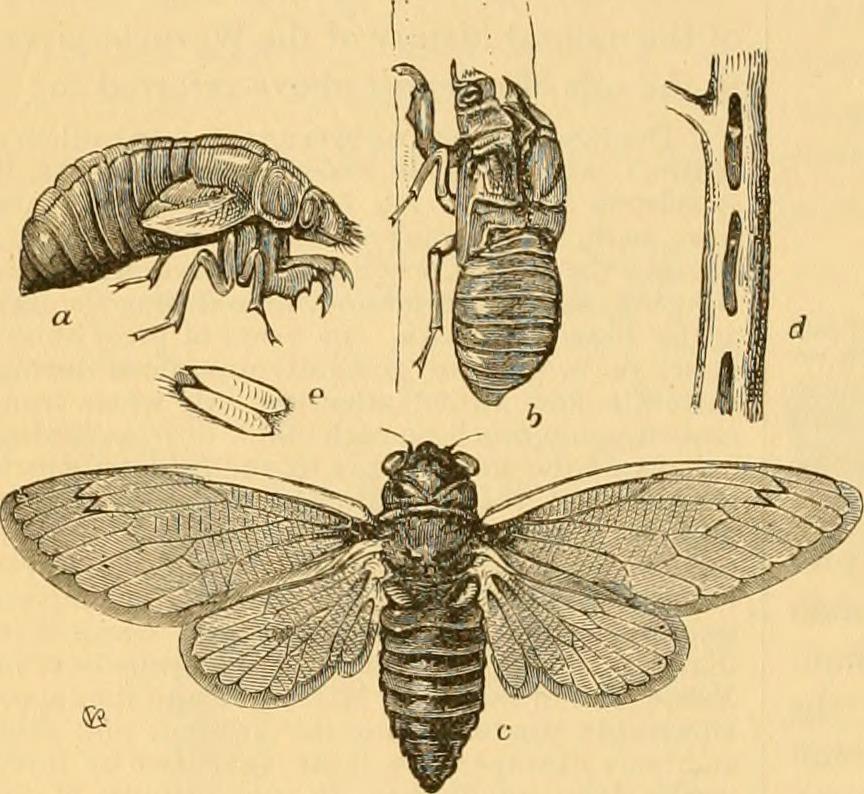
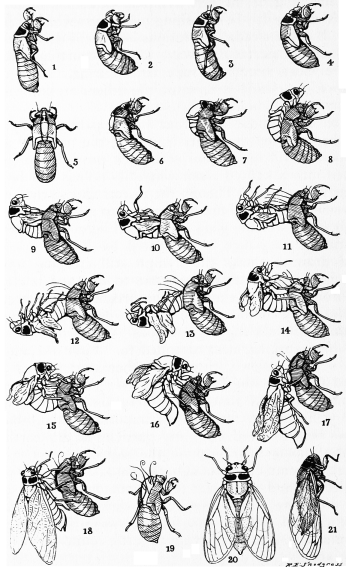
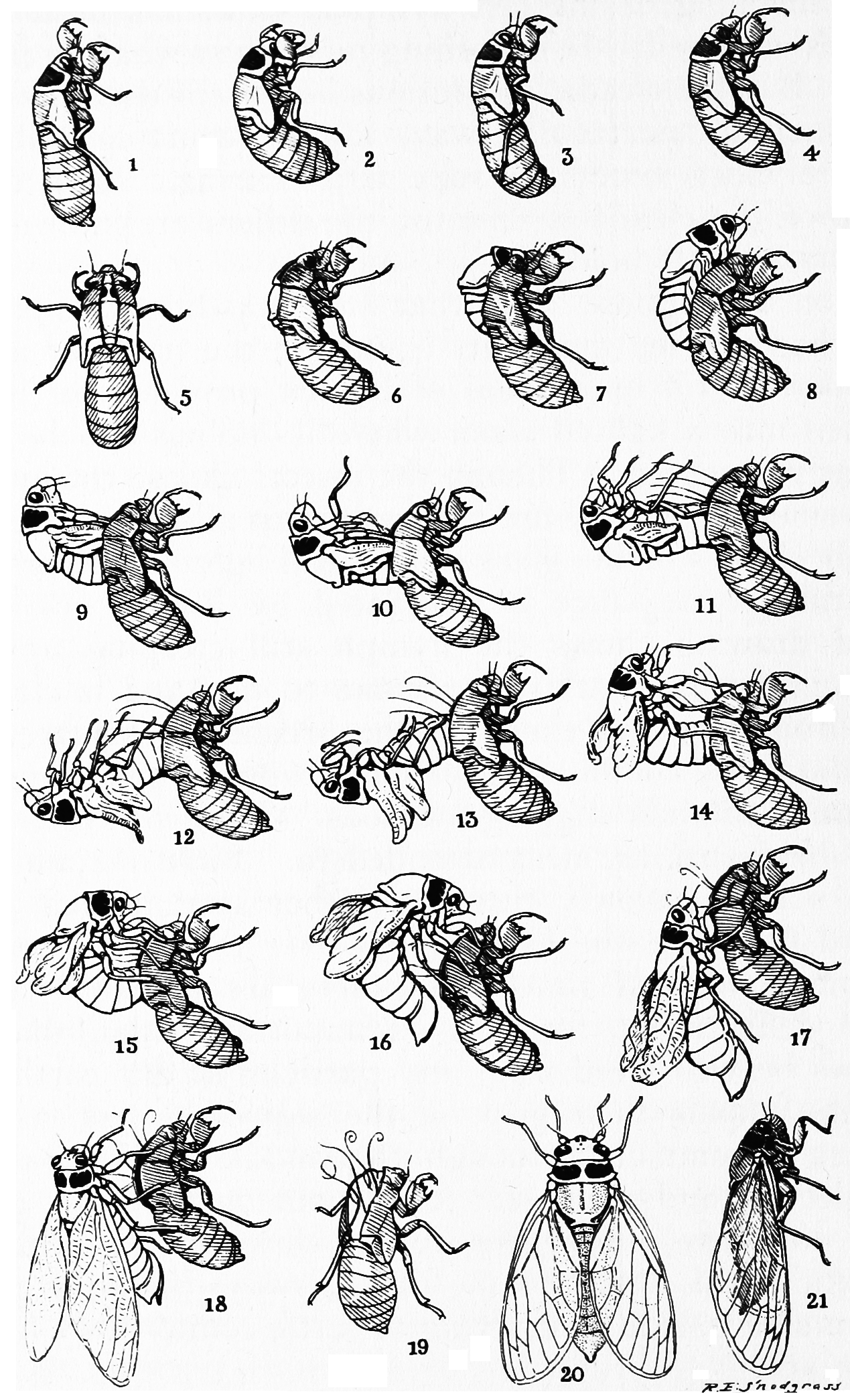
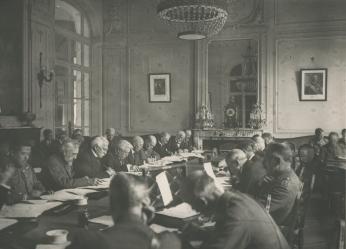
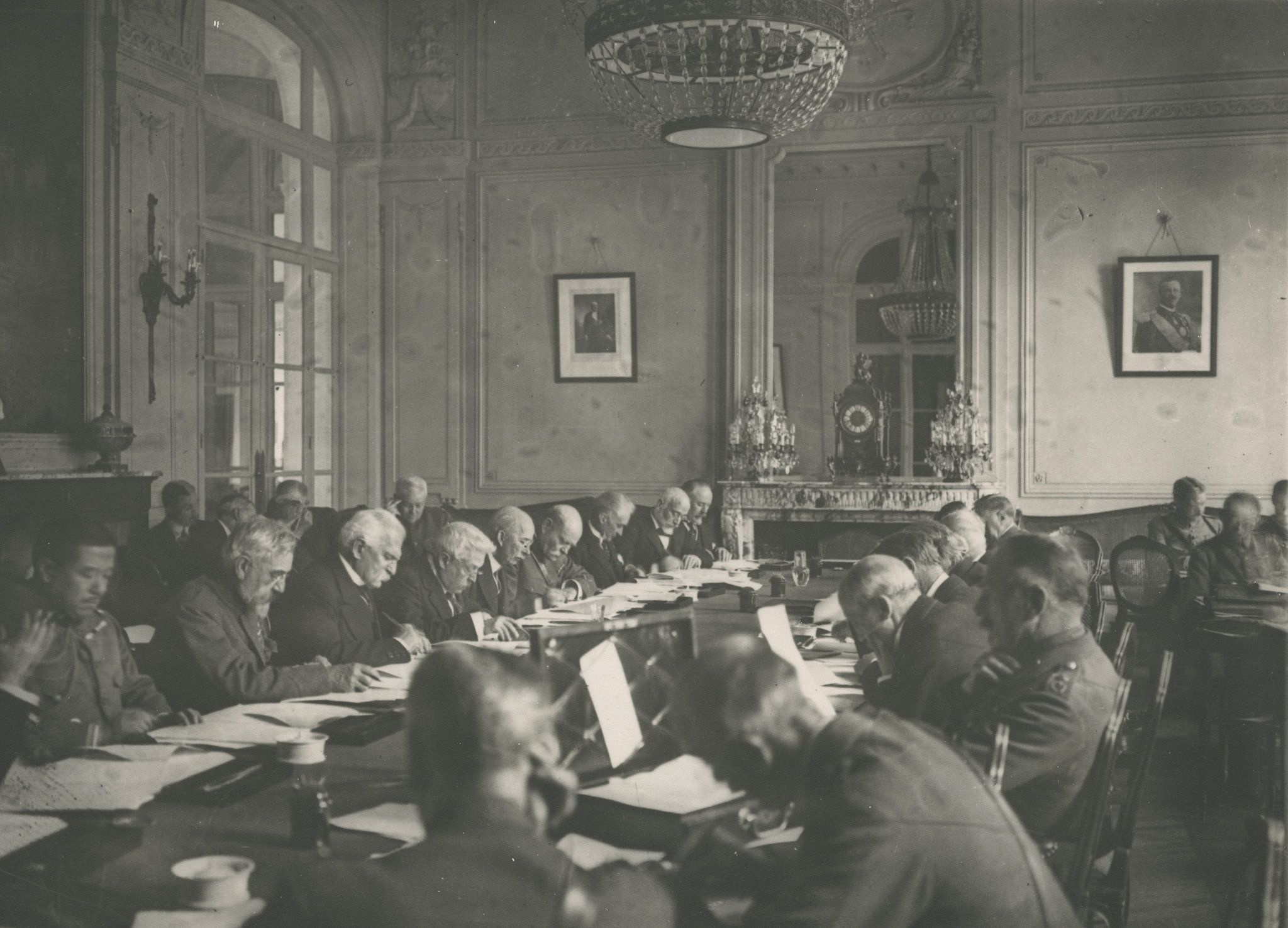





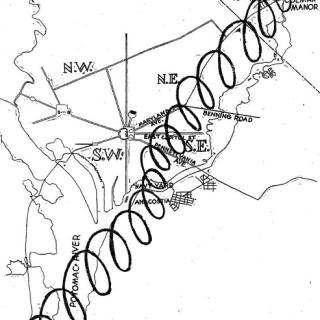

![Sketch of the mythical fuan by Pearson Scott Foresman. [Source: Wikipedia]](/sites/default/files/styles/crop_320x320/public/2023-10/Goatman_Wikipedia_Faun_2_%28PSF%29.png?h=64a074ff&itok=C9Qh-PE1)












